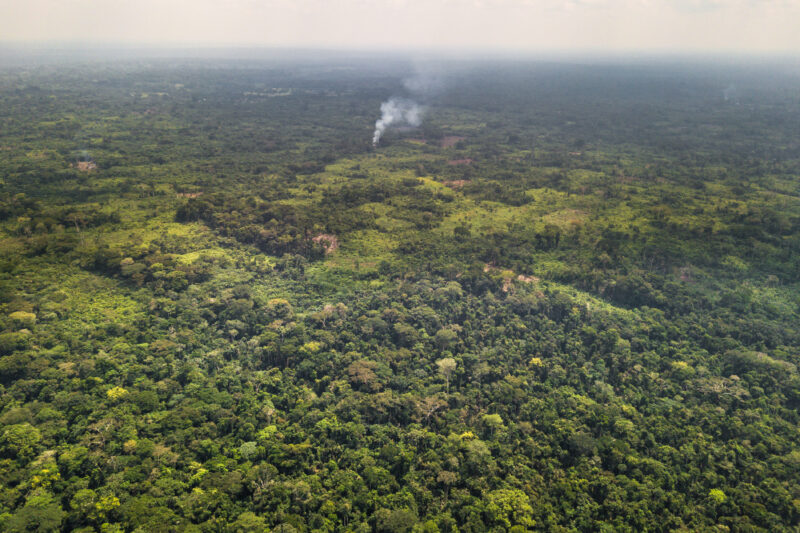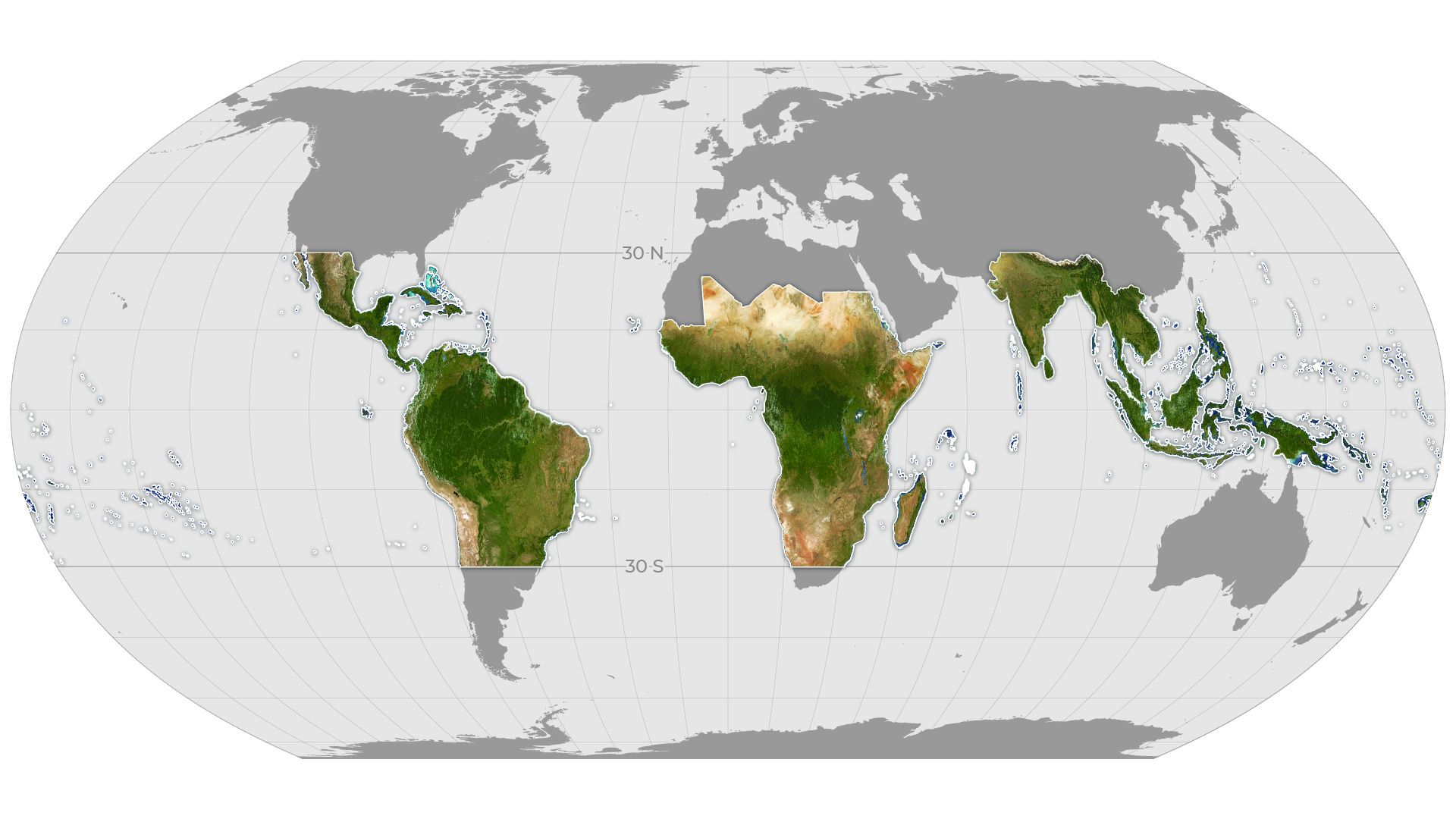
Capella Space unveils first commercial SAR images from Sequoia satellite
San Francisco-based geospatial startup Capella Space has unveiled the first commercial SAR images captured by its recently-launched Sequoia satellite. Giving customers immediate access to sub-0.5-meter rapid coverage of regions such as the Middle East, Korea, Japan, Europe, South East Asia, Africa, and the US, Capella Space has become the first American SAR operator. When fully deployed, Capella’s satellite constellation will offer hourly coverage of every point on Earth.
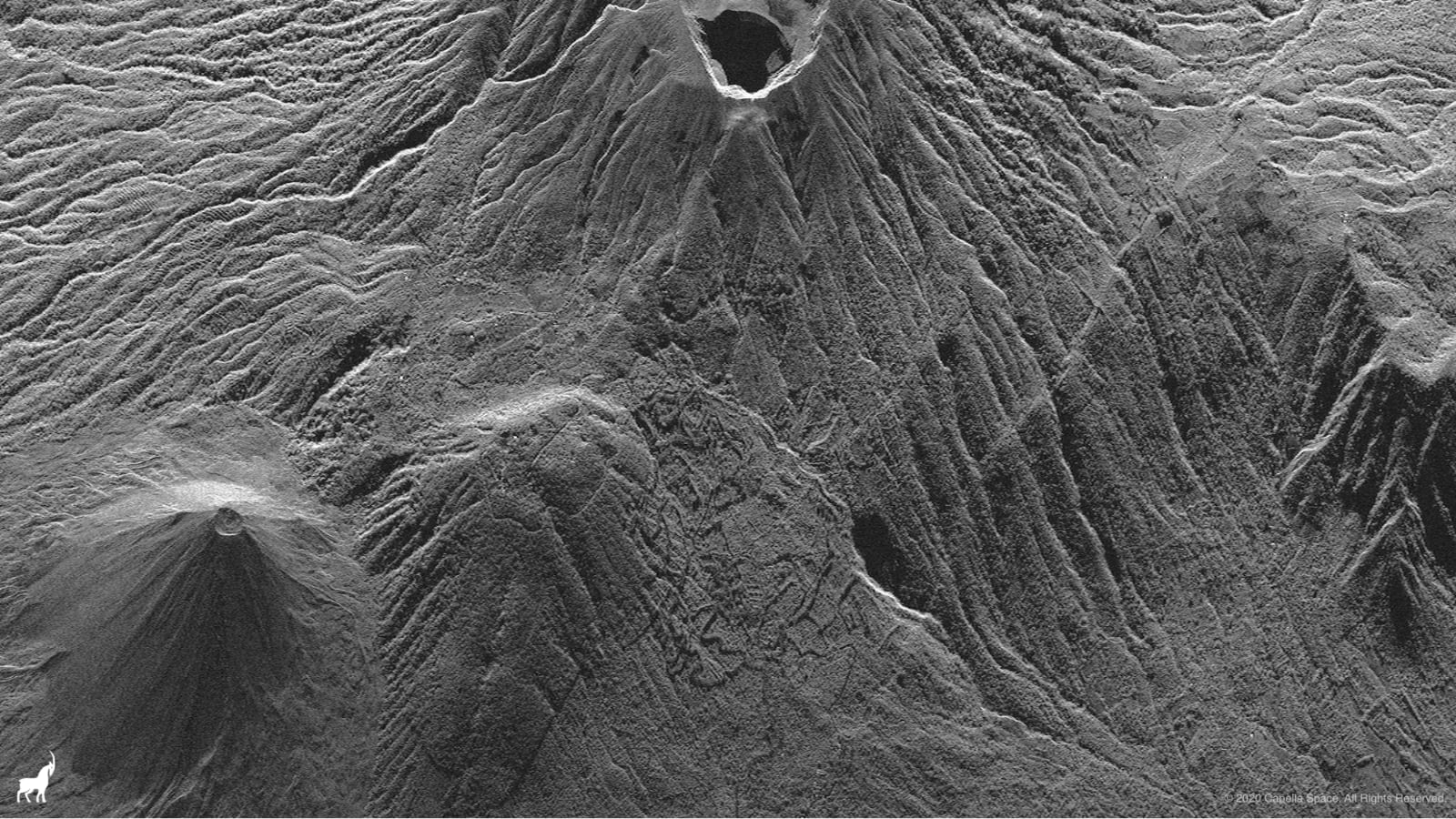
In this Strip image of Santa Ana Volcano, the geometrical patterns of the terraced gardens of Lomas de San Marcelino can be seen beneath the backdrop of the towering Volcan de Santa Ana O Ilamatepec. Courtesy: Capella Space
“When I started Capella Space in 2016, there were a number of European providers operating and building commercial SAR, but the United States had no horse in the commercial SAR race,” Payam Banazadeh, CEO and Founder of Capella Space, explains.
“Capella decided to change that dynamic, and challenge the international competition by bringing a fully American designed, built and operated capability to market. Today we accomplished that goal and we can proudly say we are the first American SAR operator.”
What is SAR?
NASA has been using Synthetic Aperture Radar (SAR) technology since the 1970s to detect sub-meter changes to the Earth’s surface, but SAR is not the first thing that comes to mind when you talk about satellite data. Most people envision an optical image – or a photograph taken by a very powerful camera utilizing the light from the sun. SAR, meanwhile, uses radio waves to create an image.
The radio waves used in SAR typically range from approx. 3 cm up to a few meters in wavelength, which is much longer than the wavelength of visible light, used in making optical images. These wavelengths fall within the microwave part of the spectrum.
Over the years, scientists have experimented with different wavelengths for SAR and determined that utilizing X-band microwaves and large bandwidth makes it possible to achieve excellent ground range resolution. The high resolution of X-band SAR and excellent contrast achieved through a process called multi-looking can yield imagery that is uniquely suitable for object detection and recognition using computer vision and machine learning.
In the below image, for example, individual balconies of the tall buildings on either side of the Nakheel Mall, Palm Jumeirah, Dubai are visible, as are the boats moored at the docks behind the buildings.
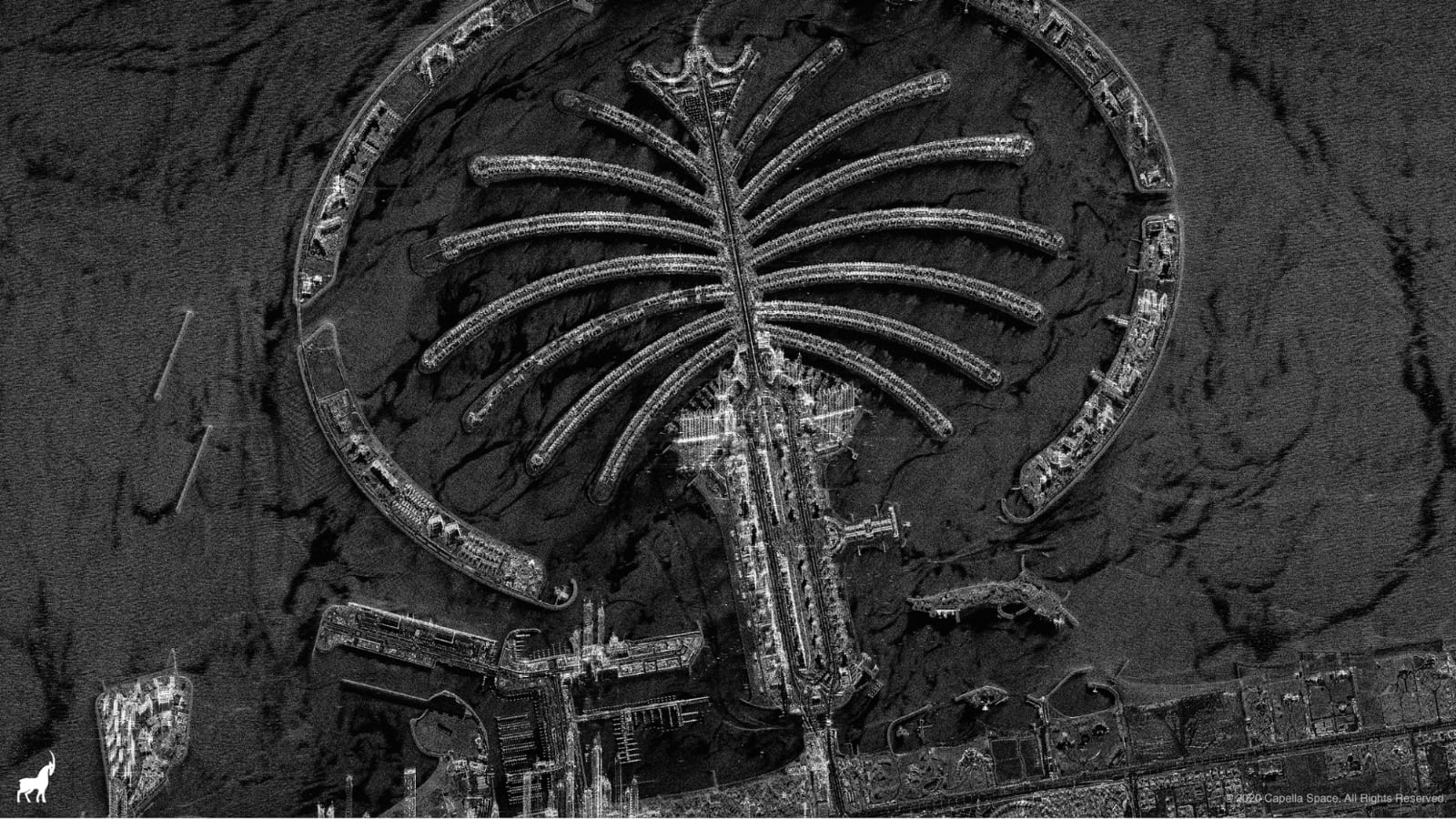
Courtesy: Capella Space
Why use SAR for earth observation
SAR can see through clouds, in all weather conditions and even at night – making it enormously useful for a wide variety of use cases, including persistent monitoring of facilities for defense and intelligence, verifying damage claims for insurance, detection of illegal activities for maritime, mapping natural disaster damage for humanitarian aid, and infrastructure security for the oil and gas sector.
For example, in the image below, the Mangrove forest of the Indian Sundarbans (right-hand side of the river) is starkly contrasted with the harvested land on the left-hand side of the river. The remains of the original Mangrove forest can be seen along the banks of the river at the ends of the strips of plowed fields. A number of boats are visible along the river.
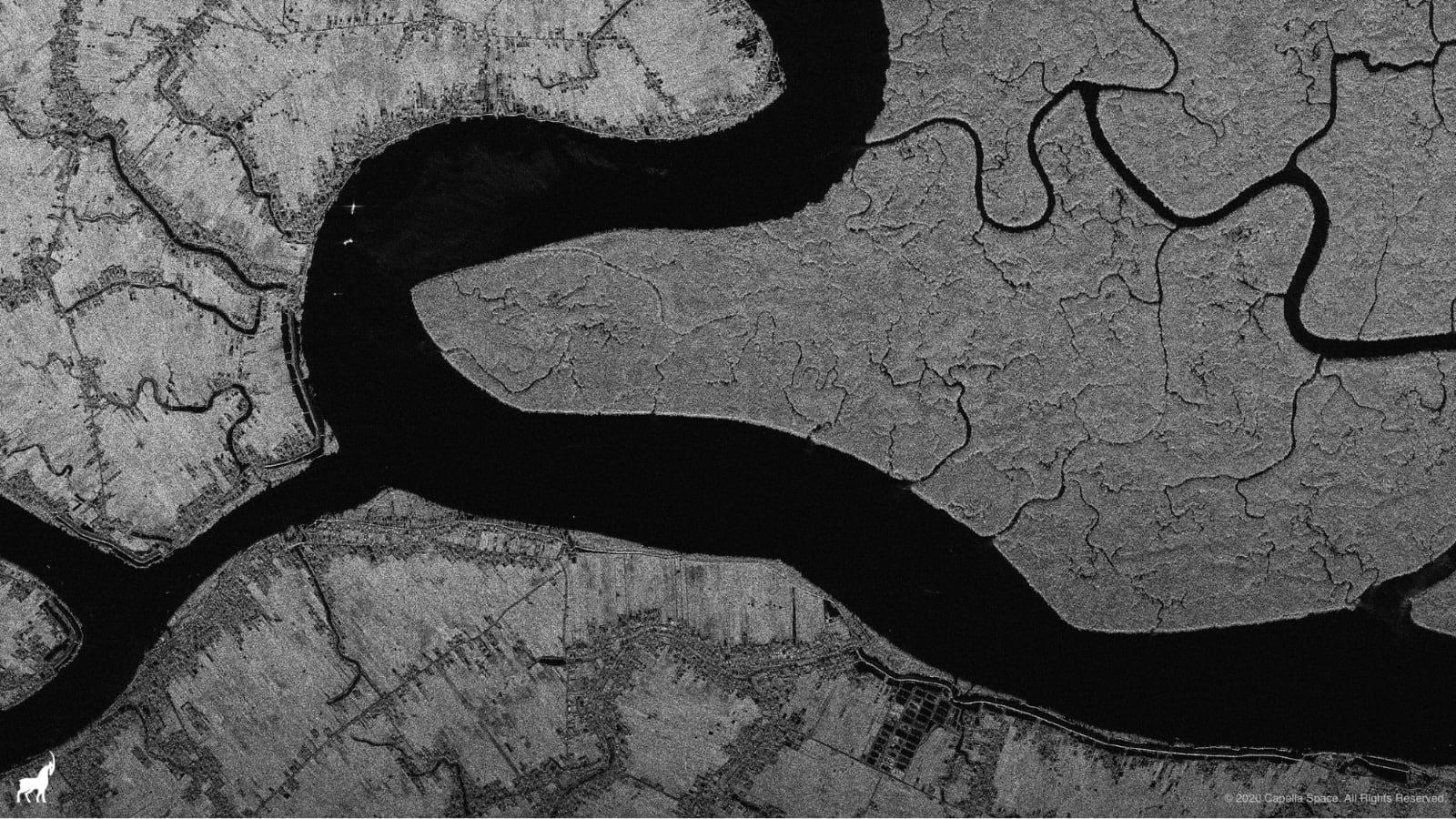
Courtesy: Capella Space
Tree counts, deforestation, and biomass are the three key applications that can be derived from this image in a region notorious for the cloudiness and monsoons that prevent optical imaging.
Did you like the article? Read more and subscribe to our monthly newsletter!







